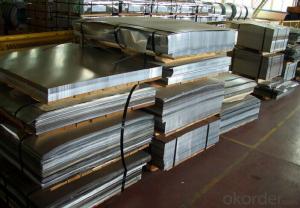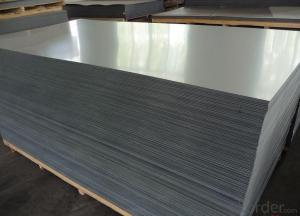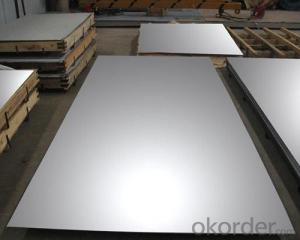Electrolytic Tinplate Sheets for Tin Can making
- Loading Port:
- Tianjin
- Payment Terms:
- TT OR LC
- Min Order Qty:
- 25 m.t
- Supply Capability:
- 7000 m.t/month
OKorder Service Pledge
OKorder Financial Service
You Might Also Like
1.Structure of Electrolytic Tinplate Sheets for Tin Can making Description
Electrolytic Tin Plate Coils and Sheets for Foods Metal Packaging, is one thin steel sheet with a coating of tin applied by electrolytic deposition. Tinplate made by this process is essentially a sandwich in which the central core is strip steel. This core is cleaned in a pickling solution and then fed through tanks containing electrolyte, where tin is deposited on both sides. As the strip passes between high-frequency electric induction coils, it is heated so that the tin coating melts and flows to form a lustrous coat.
2.Main Features of the Electrolytic Tinplate Sheets for Tin Can making
Appearance – Electrolytic Tin Plate is characterized by its beautiful metallic luster. Products with various kinds of surface roughness are produced by selecting the surface finish of the substrate steel sheet.
Paintability and printability – Electrolytic Tin Plates have excellent paintability and printability. Printing is beautifully finished using various lacquers and inks.
Formability and strength – Electrolytic Tin Plates have got very good formability and strength. By selecting a proper temper grade, appropriate formability is obtained for different applications as well as the required strength after forming.
Corrosion resistance – Tinplate has got good corrosion resistance. By selecting a proper coating weight, appropriate corrosion resistance is obtained against container contents. Coated items should meet 24 hour 5 % salt spray requirement.
Solderability and weldability – Electrolytic Tin Plates can be joined both by soldering or welding. These properties of tinplate are used for making various types of cans.
Hygienic – Tin coating provides good and non toxic barrier properties to protect food products from impurities, bacteria, moisture, light and odours.
Safe – Tinplate being low weight and high strength makes food cans easy to ship and transport.
Eco friendly – Tinplate offers 100 % recyclability.
Tin is not good for low temperature applications since it changes structure and loses adhesion when exposed to temperatures below – 40 deg C.
3.Electrolytic Tinplate Sheets for Tin Can making Images
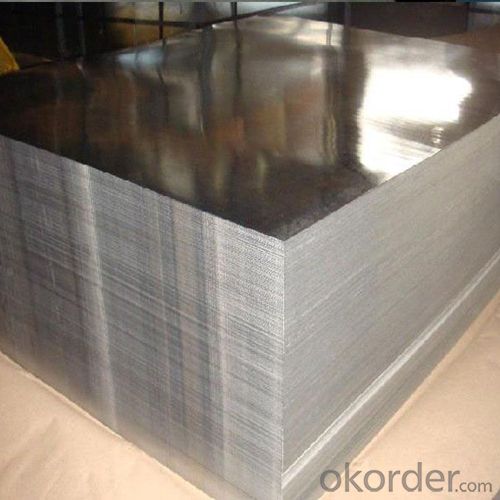
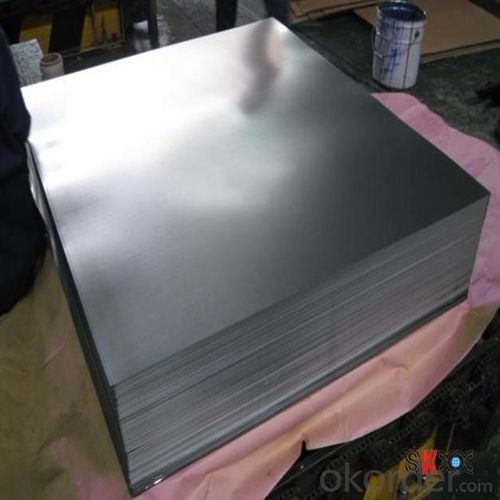
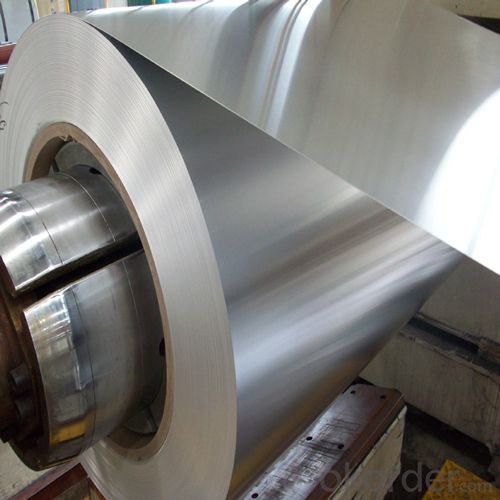
4.Electrolytic Tinplate Sheets for Tin Can making Specification
Standard | ISO 11949 -1995, GB/T2520-2000,JIS G3303,ASTM A623, BS EN 10202
|
Material | MR,SPCC |
Thickness | 0.15mm - 0.50mm |
Width | 600mm -1150mm |
Temper | T1-T5 |
Annealing | BA & CA |
Coil Inner Diameter | 508mm |
Weight | 6-10 tons/coil 1~1.7 tons/sheets bundle |
Passivation | 311 |
Oil | DOS |
Surface | Finish,bright,stone,matte,silver |
5.FAQ of Electrolytic Tinplate Sheets for Tin Can making
-What your tinplate material is used for ?
Tinplate is widely used for the packaging of products. Such as food cans,
beverage cans, pet cans, closures, general line cans and so on.
Printed Tinplate is offered!!
-How to place .an order or contact you ?
Please send us Email. we will give you a quick response in seconds .
- How is your quality ?
All our quality is prime even the secondary quality . We have many years experience
In this field with serious quality control standard . Advanced equipment, We welcome your visit to our factory .
- Q:What are the different ways to open tinplate cans?
- There are several ways to open tinplate cans, including using a can opener, a knife, a spoon, or even your hands if the can has a pull tab.
- Q:How does tinplate contribute to the reduction of plastic waste?
- Tinplate contributes to the reduction of plastic waste by providing a sustainable alternative for packaging. Tinplate containers are durable, recyclable, and can be reused multiple times. This reduces the need for single-use plastic packaging, thereby minimizing the amount of plastic waste generated.
- Q:What are the main applications of tinplate in the telecommunications industry?
- Tinplate is primarily used in the telecommunications industry for manufacturing high-frequency transformers and inductor cores. It is also utilized for shielding and grounding components due to its excellent electrical conductivity. Additionally, tinplate is commonly used in the production of waveguides, coaxial cables, and other electronic equipment where its corrosion resistance and mechanical stability are advantageous.
- Q:What are the different coating weights available for tinplate?
- The different coating weights available for tinplate typically range from 1.0 to 11.2 grams per square meter (g/m²), with common options including 2.8, 5.6, and 8.4 g/m².
- Q:What are the main trends in the tinplate industry?
- The main trends in the tinplate industry include increased demand for sustainable packaging solutions, advancements in tin coating technologies, growing preference for easy-open lids, and the adoption of digitalization and automation for improved production efficiency. Additionally, there is a shift towards lightweight tinplate materials to reduce costs and enhance recyclability.
- Q:How does tinplate affect the sound quality of musical instruments?
- Tinplate does not directly affect the sound quality of musical instruments. Instead, the materials used in the construction of the instrument, such as the wood, metal, and the design and craftsmanship, play a significant role in determining the sound quality.
- Q:How does tinplate packaging contribute to product protection against moisture?
- Tinplate packaging provides a reliable barrier against moisture due to its inherent properties. The tin coating on the steel substrate prevents direct contact between the product and moisture, acting as a protective layer. This barrier effectively blocks the entry of external moisture, reducing the risk of corrosion, spoilage, or damage to the product. Additionally, tinplate packaging is often hermetically sealed, further enhancing its moisture resistance and preserving the quality and shelf life of the enclosed product.
- Q:What are the main challenges in tinplate coating thickness control?
- One of the main challenges in tinplate coating thickness control is achieving uniformity across the entire surface of the tinplate. The coating thickness must be consistent and within the desired range to ensure proper protection and functionality of the tinplate. Additionally, controlling the coating thickness requires precise measurement and monitoring techniques as well as the ability to adjust the coating process parameters in real-time to account for any variations or deviations. Another challenge is ensuring the adhesion of the coating to the tinplate surface, as poor adhesion can lead to coating defects and reduced performance. Lastly, controlling the coating thickness while maintaining cost-effectiveness can be a challenge, as it requires optimizing the coating process to minimize material waste and reduce production costs.
- Q:How can the section of the tinplate be maintained without rust?
- The cross section of the tinplate is free of rust. Both sides have plating, the cross section can use lubricating oil
- Q:Can tinplate be used for hazardous material packaging?
- Yes, tinplate can be used for hazardous material packaging. Tinplate is a durable and corrosion-resistant material that can effectively contain and protect hazardous substances. Its ability to withstand pressure, temperature variations, and chemical reactions makes it suitable for packaging hazardous materials. Additionally, tinplate is often used for food and beverage containers, which require stringent safety standards, further supporting its suitability for hazardous material packaging.
1. Manufacturer Overview |
|
|---|---|
| Location | |
| Year Established | |
| Annual Output Value | |
| Main Markets | |
| Company Certifications | |
2. Manufacturer Certificates |
|
|---|---|
| a) Certification Name | |
| Range | |
| Reference | |
| Validity Period | |
3. Manufacturer Capability |
|
|---|---|
| a)Trade Capacity | |
| Nearest Port | |
| Export Percentage | |
| No.of Employees in Trade Department | |
| Language Spoken: | |
| b)Factory Information | |
| Factory Size: | |
| No. of Production Lines | |
| Contract Manufacturing | |
| Product Price Range | |
Send your message to us
Electrolytic Tinplate Sheets for Tin Can making
- Loading Port:
- Tianjin
- Payment Terms:
- TT OR LC
- Min Order Qty:
- 25 m.t
- Supply Capability:
- 7000 m.t/month
OKorder Service Pledge
OKorder Financial Service
Similar products
New products
Hot products
Hot Searches
Related keywords
